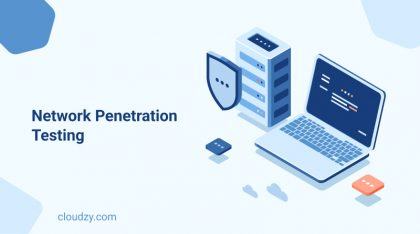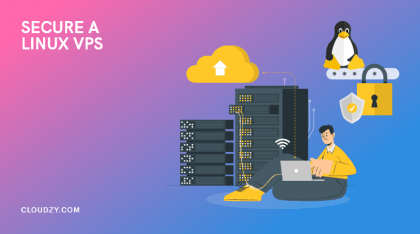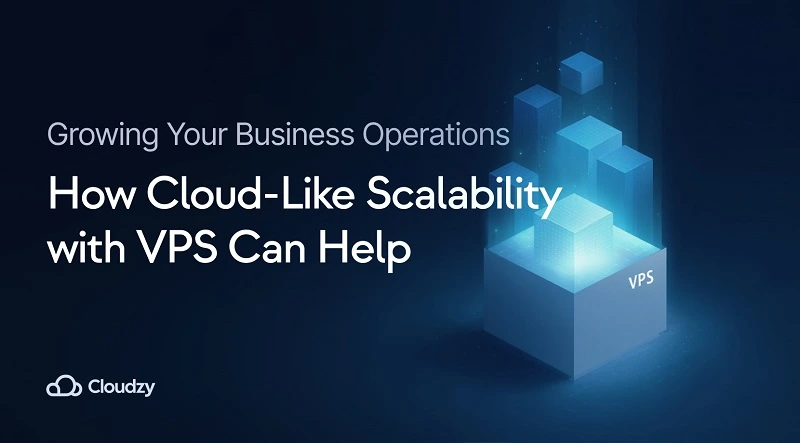As we dive into the digital era, cloud computing has become a pivotal part of our daily digital interactions. But as we increasingly rely on the cloud for everything from storing precious memories to managing vast business operations, we should consider a pressing question: How secure is our data in the cloud? This question isn’t just for tech wizards or IT professionals; it affects each one of us. Imagine this: You’re happily uploading your holiday photos to your favorite cloud service. But little do you know, a small misconfiguration in the settings can act as a vulnerability in cloud computing, leaving a backdoor open for cybercriminals. It’s like leaving your house keys under the doormat and inviting trouble.
In this blog post, we’ll review the nitty-gritty of cloud computing vulnerabilities. We’ll uncover it all, from common slip-ups like those misconfigurations to more sinister threats like insider attacks. Along with exploring these Cloud vulnerabilities, we’ll also arm you with the knowledge and strategies to safeguard your cloud data against these threats.
The Nature of Cloud Computing Vulnerabilities
Let’s dive into the core of our discussion and review the nature of vulnerability in cloud computing. At its heart, Cloud computing is an intricate web that interconnects data, services, and users. It’s a powerhouse that enables businesses to scale up effortlessly and individuals to access services from anywhere. However, this convenience comes with a disadvantage: cloud vulnerabilities that can be elusive and dangerous.
Think of cloud computing like a high-tech apartment complex. Just as each apartment has multiple access points, the cloud has various components like servers, databases, and applications. These components, if not secured properly, can be like unlocked doors, inviting unauthorized access. We can categorize these cloud vulnerabilities into three sections:
1. Misconfiguration Issues
One of the most common vulnerabilities here is misconfiguration. It’s like forgetting to lock your door; it’s simple, yet it can have disastrous consequences. Misconfigurations in cloud settings can inadvertently expose sensitive data or create loopholes for cybercriminals.
2. Insecure Interfaces and APIs
The next common vulnerability in cloud computing is insecure interfaces and APIs, the communication bridges between different cloud services. If these bridges aren’t well-guarded, it’s like having a faulty intercom in our apartment analogy, where eavesdroppers can listen in or even gain entry.
3. Insider Threats
Another critical vulnerability is the insider threat. It’s a tricky one that’s similar to a trusted neighbor turning rogue. In cloud computing, this could be an employee with access to the cloud infrastructure who misuses their privileges, intentionally or unintentionally causing harm.
These Cloud vulnerabilities are not just theoretical. They are real and present challenges that organizations and individuals face on a daily basis. For example, a major corporation might undergo a data breach due to a simple misconfiguration that leads to a significant loss of customer trust and financial repercussions. Or consider a small business using a cloud service with insecure APIs, leaving their customer data vulnerable to theft or manipulation.
Understanding these vulnerabilities in cloud computing is like knowing the weak points in your fortress. It’s the first step towards building stronger defenses and keeping the data citadel safe and secure. In the upcoming sections, we’ll explore how these vulnerabilities manifest in real-world scenarios and, more importantly, how we can fortify our digital assets against these looming threats. Stay tuned as we navigate through the stormy skies of cloud computing vulnerabilities together.

Real-World Impact of Cloud Vulnerabilities
Now, let’s zoom in on the Real-World Impact of vulnerability in Cloud computing. It’s one thing to talk about potential risks in theory, but it hits differently when we see them unfold in reality. To clarify this explanation, let’s examine some notable cloud security breaches, the consequences they bring, and their effect on businesses and individuals.
Case Studies: Notable Cloud Security Breaches
The Big Retailer Hack: Picture this: a leading retail giant suffered a massive data breach due to a cloud misconfiguration. This slip-up left millions of customer records, including sensitive financial data, exposed. It wasn’t just a technical error; it was a nightmare for customers worried about identity theft.
The Healthcare Data Leak: In another scenario, a healthcare provider experienced a severe breach when an employee inadvertently leaked access credentials. This mistake exposed thousands of patients’ medical records. It’s a stark reminder that even a simple mistake can have far-reaching implications in the cloud.
The Consequences: Data Loss, Compliance Violations, and Reputation Damage
The fallout from vulnerability in Cloud computing is multifold. Firstly, there’s the glaring issue of data loss. Once personal and financial information of customers is leaked, it can be misused in different ways, leading to identity theft and financial fraud.
Then, there’s the compliance angle. Many companies are bound by regulations like GDPR or HIPAA. Breaches can lead to hefty fines, legal battles, and a long road to regulatory compliance recovery.
And let’s not forget the reputation damage. Trust is hard to earn and easy to lose. A company that falls prey to a cloud breach may lose its reputation, sometimes irreparably. Customers and partners might think twice before engaging with a business that’s perceived as insecure.
The Effect of Vulnerability in Cloud Computing on Businesses and Individuals
The impact of cloud security vulnerabilities doesn’t stop at the breached company’s doorstep. It sends ripples across the business landscape. Competitors start to tighten their cloud security, fearing they could be next. Investors grow wary, and the market reacts.
For individuals, the effect is more personal and immediate. Imagine the stress of knowing your sensitive data is out there, potentially in the hands of cybercriminals. It’s not just a breach of data; it’s a breach of trust and peace of mind.
In these real-world scenarios, we see how vulnerability in Cloud computing can unleash storms that impact not just the entity breached but the entire ecosystem surrounding it. As we move forward, understanding these risks is crucial for devising strategies to mitigate them. Remember, in the world of cloud computing, it’s not just about weathering the storm – it’s about being prepared for it.

Mitigating Risks and Cloud Vulnerabilities: Best Practices for Cloud Security
Knowing about different types of vulnerability in Cloud computing is crucial, but what’s even more important is understanding how to protect our digital assets from these threats. Let’s break down the best practices for cloud security and see how emerging technologies change this realm.
Regular Security Audits and Compliance Checks: Think of this as your regular health check-up, but for your cloud environment. Regular audits help catch vulnerabilities before they turn into gaping holes. It’s about staying one step ahead, ensuring that your cloud setup complies with the latest security standards and regulations.
Implementing Strong Access Controls and Encryption: This is akin to having a robust lock on your front door and a safe for your valuables. Strong access controls ensure that only authorized personnel can access sensitive data, minimizing the risk of insider threats. Encryption, on the other hand, acts as a failsafe. Even if data gets into the wrong hands, it remains indecipherable and, therefore, useless to the intruders.
Continuous Monitoring and Incident Response Planning: The cloud is dynamic and constantly evolving. Continuous monitoring is like having a security camera that never sleeps, keeping an eagle eye on all activities. Coupled with this, having a robust incident response plan ensures that if something goes awry, you’re not caught off guard. It’s about being prepared to act swiftly and effectively to mitigate any damage.

Emerging Technologies and Their Role in Enhancing Cloud Security
AI and Machine Learning for Anomaly Detection: Imagine having a highly intelligent system that learns and adapts, detecting unusual patterns that could signify a security threat. That’s what AI and ML bring to the table. They analyze vast amounts of data, learn from it, and get better over time at sniffing out potential threats, often before human eyes can spot them.
Blockchain for Enhanced Data Integrity: Blockchain is like an unbreakable seal on your data. It provides a level of security and transparency that’s hard to break. By creating an immutable ledger of transactions, blockchain technology ensures your data’s integrity is maintained. This makes blockchain an increasingly popular choice for securing sensitive data in the cloud.
In today’s Cloud-driven world, using these practices and emerging technologies isn’t just a recommendation; it’s a necessity. Adopting a proactive and tech-forward approach to cloud security helps us to significantly reduce risks and ensure that our journey in the cloud is not just innovative and efficient but also secure. If you want to learn more about cloud vulnerabilities, you can read our blog on vulnerability assessment vs. penetration testing, which is a good source for protecting your cloud resources.
Conclusion
Let’s recap the key takeaways as we wrap up our journey through vulnerability in Cloud computing. We’ve navigated the murky waters of cloud vulnerabilities, from the common missteps to the devastating impacts of breaches. We’ve also explored how regular audits, strong access controls, and the latest in AI and blockchain can protect our cloud environments. Remember, the goal isn’t just to survive the storm but to thrive within it.
Speaking of thriving, if you want to step up your cloud game and make sure you have top-notch security, consider exploring Cloudzy’s Linux VPS. With its flexibility, robust security features, 24/7 technical support, a 99.95% uptime guarantee, and the power of Linux, it’s an excellent choice for those seeking a secure, customizable, and scalable cloud solution. Dive into the world of Cloudzy’s Linux VPS and take control of your cloud journey with confidence and finesse.
Get yourself an economy or premium Linux VPS for hosting your website or remote desktop, at the cheapest price out there. VPS Running on Linux KVM for increased efficiency and working on powerful hardware with NVMe SSD storage for increased speed.
Linux VPS Hosting
FAQ
What are the 3 security issues relating to cloud computing?
The three key security issues in cloud computing are: Misconfiguration, leading to unauthorized access or data exposure; Insecure Interfaces and APIs, which can be exploited for unauthorized access; and Insider Threats, where trusted individuals misuse their access to harm the system.
What is a vulnerability in computing?
A vulnerability in Cloud computing refers to a weakness or flaw in a system that can be exploited to put the system’s security or functionality at risk. Cloud vulnerabilities often lead to unauthorized access, data theft, or other malicious activities.
What are cloud security risks?
Cloud computing security vulnerabilities include various threats such as data breaches due to weak security protocols, loss of sensitive data through mishandling or attacks, and service disruptions from cyber-attacks, all potentially leading to financial and reputational damage.




